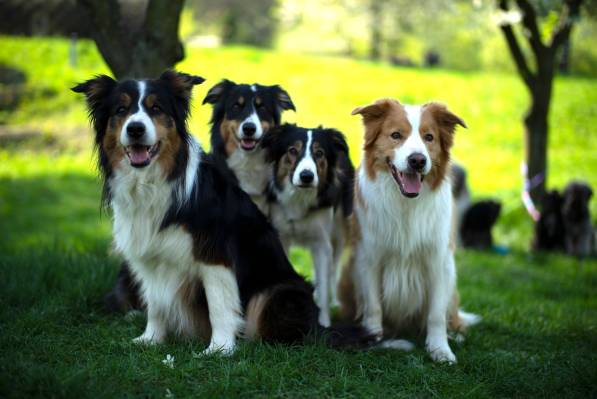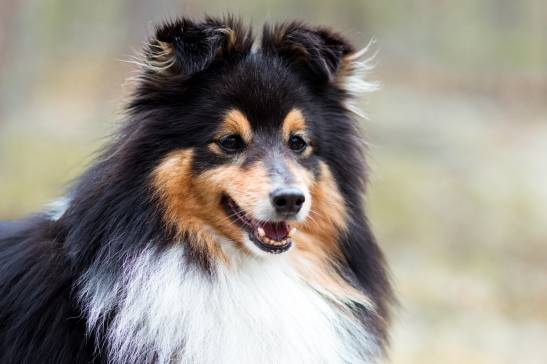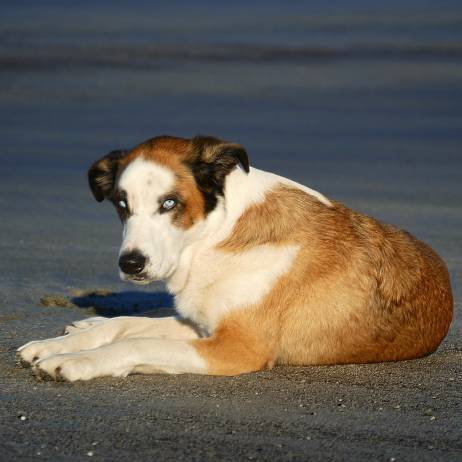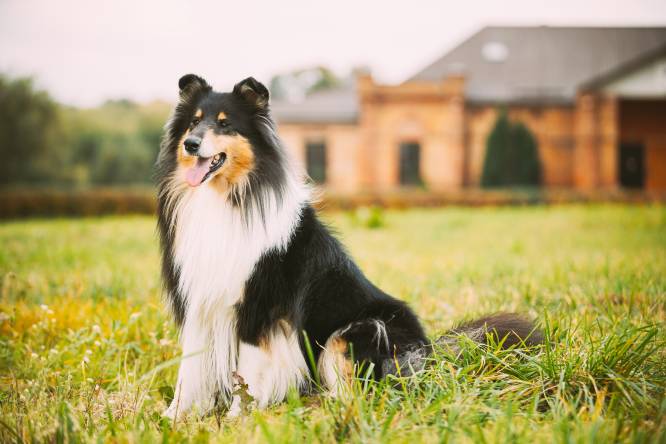Connect with a verified veterinarian in minutes. Licensed vets are available 24/7 to answer your questions. No need to worry about your furry family member.
The Border Collie is known for being a highly intelligent herding dog. They originally came from England and Scotland, where the dogs were developed to herd sheep. And they’re considered one of the most intelligent dog breeds around.
So, if you’d like to learn more about Border Collie colors, read on!
Border Collies are Not Just Black & White!
The iconic coloration for Border Collies is black and white! These are the most well-known colors for this dog breed; however, the dogs come in a wide variety of beautiful colors and patterns.
Breed Standards According to Kennel Clubs
There are several recognized kennel clubs around the world. These clubs determine the acceptable standards for the dog breeds they recognize. The same holds true for the Border Collie. Here’s a breakdown of the breed’s standards according to four leading kennel clubs:
American Kennel Club (AKC)
Acceptable coat colors for the Border Collie include black, blue, blue merle, brindle, gold, lilac, red, red merle, sable, sable merle, saddleback sable, white and black, white and blue, white and blue merle, white and red, white and red merle, white ticked.
They also recognize these non-standard colors: seal, slate, white, white & gold, white & sable, white & seal.
United Kennel Club (UKC)
These are the acceptable coat colors for the Border Collie according to the UKC: black, red, gray, blue merle, red merle, sable, and other color combinations are acceptable. Their markings can be white or ticked.
Canadian Kennel Club (CKC)
This organization recognizes any color for Border Collies.
Federation Cynologique Institute (FCI)
This kennel club recognizes a wide range of colors, except white.

Review symptoms, medications & behavior to keep your pets healthy with a Vet Online in just minutes.
Ask a Vet Live NowBorder Collie Patterns
Border Collies have four main patterns, including:
Merle Border Collie
This pattern is also called the dapple pattern. The coat features varying spots that fall over the coat. However, the pattern is really formed by different tones of the same color. The pattern appears on a lighter background with darker spots.
Piebald
Piebald is another common Border Collie coat pattern. The dog’s coat has non-pigmented spots. For instance, a black dog may have large white spots.
The downside of this pattern is that piebald dogs can develop hearing problems.
Saddle
The saddle Border Collie pattern is not common; however, the fur on the dog’s back looks like a saddle. This is often seen in German Shepherds, just to give you an idea of what it looks like. These dogs are usually black and tan, though they can also have a black saddle with white legs, paws, faces, and more. The dog will still have some tan color, too.
Brindle
Brindle is an interesting pattern that can result in something that looks like tiger stripes. However, on the Border Collie, the pattern is much subtler. Brindle coats can come in different shades of the same color.
The brindle Border Collie looks as if he has brindle markings rather than clear stripes. This is a rare pattern to see in this breed.
Border Collie Markings
Border Collies are also known for their distinctive markings. These dogs have five main markings, including:
Blaze
This is the most common pattern for Border Collies. The blaze is a white stripe that starts on the dog’s forehead and runs to the back of their necks. The stripe can be wide or more like a zig-zag bit of lightning.
Points
Points are also common in Border Collies. These typically appear on the dog’s ears, though they can also be seen on the face, legs, and tail. The points are spots or outlines that are darker than the dog’s base color.
Ticking
Ticking is another common marking found on Border Collies. Ticking is made of small patches of color inside white markings. In other words, it is tiny spots of color found in the white-spotted areas of a spotted Border Collie.
We’re not sure that made sense, but the effect is beautiful!
Brindle
While brindle is a pattern, it can also be a marking on Border Collies. However, the pattern usually occurs as a point pattern. This is rare, however,
Speckled
Speckled Border Collies are very popular and quite common. The dogs can have lots of speckles all over their coats. We have to say it’s quite pretty on these beautiful dogs.
Most Common Border Collie Colors & Patterns
Here are the most common colors and patterns for Border Collies!
Black & White
The black & white Border Collie is the iconic combination of colors and patterns most people think of in this breed. The dogs are usually more black than white and have a blaze stripe on their foreheads.
Tri-Color Border Collie
The tricolored Border Collie is the next more popular coat. The colors of this dog include a mix of black, white, and tan. However, this can vary.
Blue & White Border Collie
The blue & white Border Collie isn’t really a true blue color! However, the color is created by a dilute black that looks blue. This color comes in different patterns, with blue & white being the most common. The dogs can have the same markings as black & white Border Collies.
Chocolate & White Border Collie
The chocolate and white Border Collie usually has the same markings as the black & white dogs, including the blaze. The chocolate color can vary from deep chestnut to light tan.
Less Common Border Collie Colors
Now, let’s take a look at the less common Border Collie colors!
Lilac & White
The lilac & white colors in a Border Collie are very rare. The dogs can look as if they have a brown/blue or blue/brown color. These dogs also usually have lighter-colored eyes, too.
You may also hear these dogs referred to as fawn and silver. No matter what, the dogs are beautiful!
Lilac Merle
More rare is the lilac merle coat color in a Border Collie. The dog’s base color is the same as the top color; however, the fur has spots and merle markings.
Slate Merle
Slate merle is another rare coat for Border Collies. These look somewhat like the blue & white or bleu merle, but they are also different. This coloring has diluted black and white that turns into slate or a light gray or silver color. When these colors are combined with merle, the effect is quite striking.
Sable
In Border Collies, the sable is usually more of a pattern rather than a color. Sable comes about when each strand of hair has different colors. For instance, the base may be black and then over to chocolate, tan, or white. The base color can be black, lilac, blue, or chocolate.
Summing It Up
So, there you have it! These are all the colors, patterns, and markings of Border Collies! The takeaway is that Border Collies are amazing, beautiful dogs no matter what colors and patterns they may sport!
Connect with a verified veterinarian in minutes. Licensed vets are available 24/7 to answer your questions. No need to worry about your furry family member.

Kim
Kim is a talented author, who loves animals especially dogs. She engaged in writing books and articles relating to animals a decade ago. Kim resides in Chicago with her husband and son. The family is the proud owner of a dog and a parrot (Jack and Lily). Kim wanted more than these two pets, but her husband put his foot down... She often visits elementary schools to talk to the kids about what she learned about pets and how they could learn from them.
Review symptoms, medications & behavior to keep your pets healthy with a Vet Online in just minutes.
Ask a Vet Live Now




